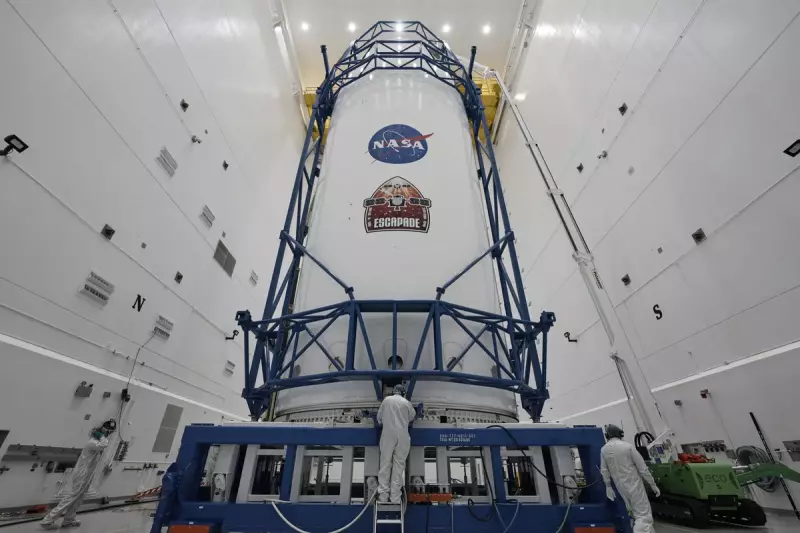
Massive New Glenn Rocket Soars, Carrying NASA's Martian Eyes
In a spectacular afternoon launch, Blue Origin successfully sent its colossal New Glenn rocket skyward from Cape Canaveral Space Force Station, carrying a pair of NASA spacecraft bound for Mars. This momentous flight on Thursday, 13 November 2025, marks a critical step for Jeff Bezos' space company and the American space agency's interplanetary ambitions.
A Delayed but Successful Ascent
The 321-foot (98-metre) rocket's departure was stalled for four days due to a combination of poor local weather and intense solar storms, which were powerful enough to create auroral displays as far south as Florida. The successful launch was only the second flight for the New Glenn, a vehicle upon which both Blue Origin and NASA are relying for future missions to transport people and supplies to the Moon.
This mission was a marked improvement from the rocket's inaugural test flight in January, which managed to deliver a prototype satellite to orbit but failed in its attempt to land the booster on an Atlantic barge. For this launch, Blue Origin aimed to successfully recover the booster after it separated from the upper stage and the Mars orbiters—a vital procedure for reusability and cost reduction, mirroring the strategy pioneered by competitor SpaceX.
The Escapade Mission's Long Journey to the Red Planet
The twin NASA spacecraft, named Escapade, are now embarking on a drawn-out voyage. They will first spend nearly a year positioned about 1 million miles (1.5 million kilometres) from Earth. Once Earth and Mars align favourably in the autumn of 2026, the duo will use a gravity assist from our planet to slingshot towards Mars, with an expected arrival in 2027.
Once in orbit around Mars, the identical orbiters will work in tandem to map the planet's upper atmosphere and its scattered magnetic fields. Their primary scientific goal is to study how these regions interact with the solar wind. These observations are crucial for understanding the processes that led to the Martian atmosphere escaping into space, which helps explain how the planet transformed from a potentially warm and wet world into the dry, dusty landscape we see today.
"We really, really want to understand the interaction of the solar wind with Mars better than we do now," stated Escapade's lead scientist, Rob Lillis of the University of California, Berkeley, prior to the launch. "Escapade is going to bring an unprecedented stereo viewpoint because we’re going to have two spacecraft at the same time." The mission will also provide invaluable data on how best to protect future astronauts from Mars' harsh radiation environment.
A High-Value, Low-Cost Mission in the New Space Race
Managed and operated by UC Berkeley, the Escapade mission is a relative bargain in space exploration terms, coming in at under $80 million. NASA saved significant funds by booking a ride on one of New Glenn's early flights. The orbiters were originally scheduled to launch in the autumn of 2024, but NASA opted to skip that ideal two-year launch window due to concerns over potential delays with Blue Origin's brand-new rocket.
Named after John Glenn, the first American to orbit the Earth, the New Glenn is a behemoth, five times larger than Blue Origin's New Shepard rockets used for suborbital tourist flights from West Texas. The company has ambitious plans for the near future, including launching a prototype Blue Moon lunar lander on a demonstration mission aboard a New Glenn in the coming months.
The launch intensifies the modern space race. Founded in 2000 by Amazon's Jeff Bezos, Blue Origin already holds a NASA contract for the third crewed Moon landing under the Artemis programme. However, Elon Musk's SpaceX secured the contracts for the first and second crewed landings using its Starship vehicles, which stand nearly 100 feet (30 metres) taller than New Glenn.
In a significant recent development, NASA's Acting Administrator Sean Duffy reopened the contract for the *first* crewed Moon landing, citing concerns over the progress of Starship's flight tests in Texas. Both Blue Origin and SpaceX have since presented accelerated landing plans to NASA. The space agency itself remains on track to send astronauts around the Moon early next year using its own powerful Space Launch System (SLS) rocket, with a subsequent crew attempting a landing. NASA is pushing to return astronauts to the lunar surface by the end of this decade, partly to stay ahead of China's own lunar ambitions.





